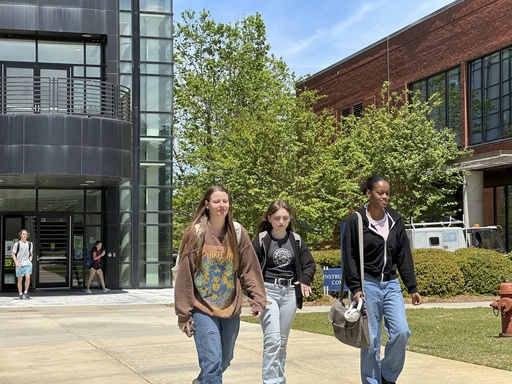
ATLANTA — This fall, all 26 public universities and colleges in Georgia experienced a noteworthy enrollment increase, marking one of the most significant surges in several years.
Overall enrollment across the state rose by 6% compared to the previous year, adding nearly 20,000 students and setting a new total of almost 365,000, surpassing last year’s peak of 344,000.
At a meeting in Atlanta, officials from the University System of Georgia informed the regents that the surge is partly attributed to the Georgia Match program, which encourages high school seniors to apply for college admission through personalized letters.
Furthermore, online master’s degree programs offered by Georgia Tech contributed significantly to this growth, with the university reporting an 11% increase in enrollment. Georgia Tech has now become the largest university in the state, boasting over 53,000 students.
The growth in enrollment in the University System of Georgia has outpaced national trends. According to recent reports from the National Student Clearinghouse, student enrollment across the United States increased by only 3%.
Chancellor Sonny Perdue expressed pride in the progress made by their campuses during the regents’ meeting, highlighting their achievements in this area.
While the overall growth is positive, it is not uniformly distributed. Larger institutions tend to experience faster increases compared to smaller colleges. Nevertheless, these smaller schools are showing signs of recovery after facing a decline in student numbers during the pandemic.
For instance, the University of West Georgia witnessed a remarkable enrollment increase of nearly 13%, marking the highest growth among the system’s schools.
Georgia Tech accounted for an 11% rise in student enrollment, while Augusta University saw an uptick of 10%. Additionally, Georgia Southwestern State University and the College of Coastal Georgia each recorded nearly 9% growth in their student populations.
Gaining and maintaining student enrollment is particularly crucial for smaller institutions since a significant portion of the funding provided by state lawmakers is based on enrollment figures.
These smaller universities often lack substantial private donations or research grants, meaning that declines in student numbers can directly lead to budget cuts.
It’s important to note that although overall enrollment is rising, eight of the nine schools designated as state colleges—institutions that typically offer both two-year and four-year degrees—still have student numbers below pre-pandemic levels from fall 2019. Only Dalton State College in northwest Georgia has managed to increase its enrollment compared to five years ago.
Enrollment growth was observed across all four undergraduate years, as well as among graduate students and younger individuals dual-enrolled in both high school and college courses.
The system recorded a notable increase in the number of first-time freshmen as it attempts to counteract upcoming demographic trends.
Projections indicate that the number of high school graduates in Georgia could decline significantly due to a fall in birth rates, with estimates suggesting a 12% decrease in the graduating class of 2037 compared to 2025.
The Georgia Match program is part of a larger trend known as direct admission, which aims to engage students who might not have previously considered higher education. More than half of the students who received invitations applied to a public college in Georgia.
Currently, 23 institutions within the University System of Georgia are participating in this initiative, while the University of Georgia, Georgia Tech, and Georgia College & State University are not involved as they prioritize standardized testing and other criteria in their admissions process.
In terms of demographic shifts within the enrollment figures, the proportion of white students in the overall university system continued to decline, dropping below 42% this year. Conversely, the shares of Hispanic and Asian students have risen, reflecting Georgia’s increasingly diverse population, while the percentage of Black students saw a slight increase, reaching 26%.
